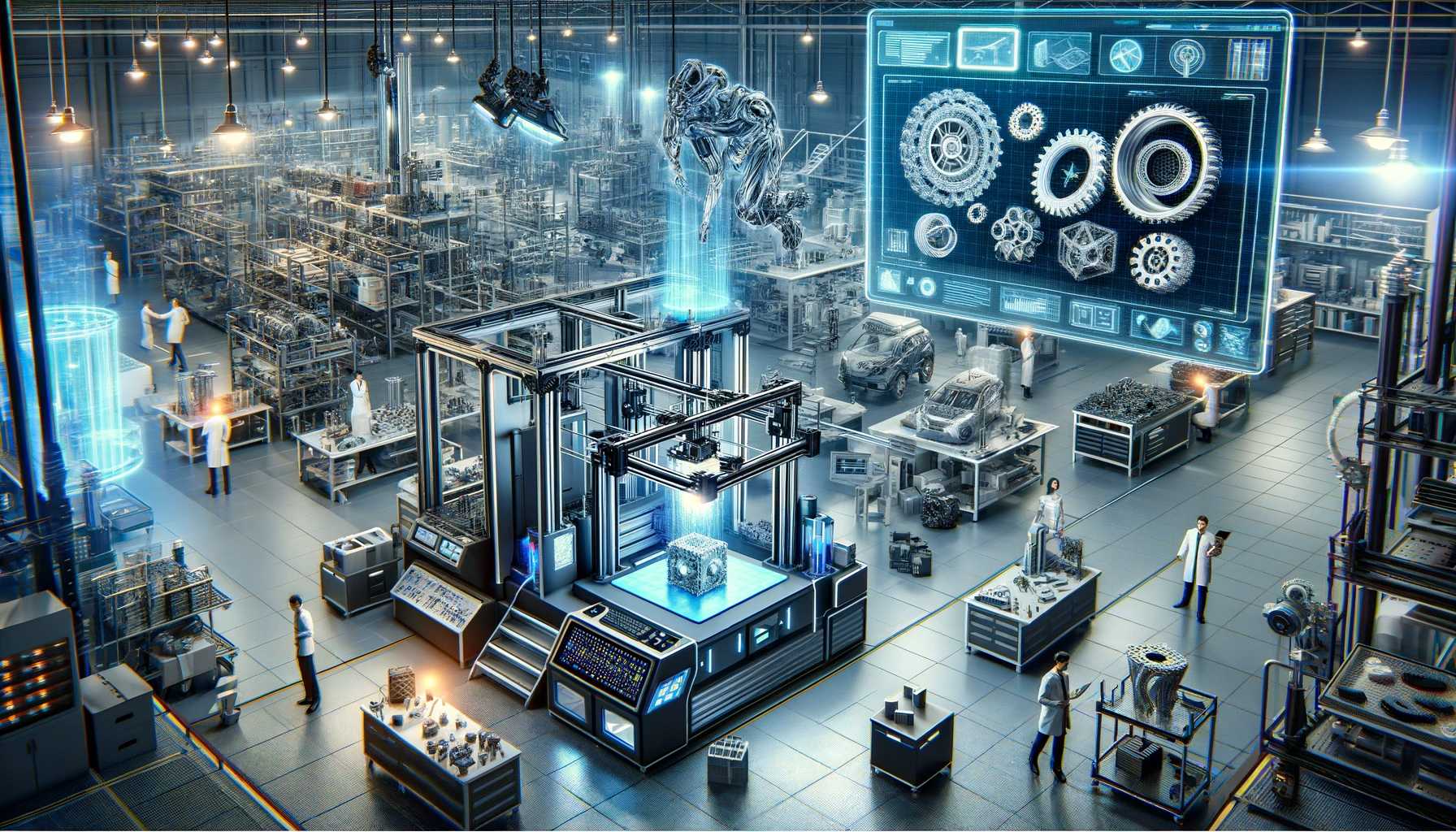THE USE OF 3D PRINTING IN MANUFACTURING
Right now, the purest digital manufacturing technology available is additive manufacturing. When transferring a file across printers or locations, it has almost no switching costs and doesn't require tooling or fixturing. That is a significant change from the production practices of the previous 200 years. Currently, 3D printing applications in manufacturing are changing a number of sectors.
Almost every stage of the production process now involves 3D printing due to investments being made throughout the additive ecosystem. According to Jabil's 2019 Additive Materials and 3D Printing study, which surveyed over 300 professionals in manufacturing businesses responsible for 3D printing, practical applications have grown significantly over the last two years.
While other 3D printing uses in production are growing, prototyping remains the most common use overall. For instance, since late 2017, the percentage of respondents employing 3D printing for production parts has increased from 27 percent to 52 percent, almost doubling in size. Consumer electronics is the industry that uses 3D printing for this reason the most out of all the industries we investigated. Conversely, 57% of respondents said that the car industry regularly uses 3D printing to produce bridges. In terms of research and development, jigs, fixtures, and tooling, medical devices are at the forefront. Lastly, 3D printing will probably be used in the transportation sector for upkeep and repairs.
There are strong arguments in favor of more 3D printing uses in the manufacturing sector. Almost majority of the responders state that 3D printing is faster than traditional manufacturing. In fact, 25 percent report that it can be as much as 20 times faster, but most report that it is at least twice as fast. During a time when speed-to-market is essential, additive manufacturing can deliver numerous benefits in this arena.
Furthermore, according to the panelists, 3D printing can help firms reduce production costs, manage one-off tasks more effectively, respond faster to production line concerns, eliminate the requirement for tooling as a manufacturing bottleneck, and facilitate dispersed manufacturing.
Naturally, the precise advantages of 3D printing vary depending on the technology used. The following are some important sectors that now use additive manufacturing:
3D Printing: The Solution to the Limitations of Medical Engineering
According to a Jabil study, 69 percent of respondents said that they were most enthused about the design freedom that 3D printing allows for in the medical device and healthcare engineering fields. This benefit has been personally experienced by Jabil engineers, who were not surveyed or interviewed.
The Healthcare Division of Jabil set out to create a pressure-sensing cardiac catheter proof-of-concept from the ground up. Several teams from around the organization participated in the "Project Under Pressure" effort, but the additive manufacturing team may have had the most impact on the project's completion date.
Prototyping is sped up by 3D printing, which might provide engineers additional chances to tweak and refine a particular part. The team responsible for additive manufacturing was assigned the responsibility of printing the cardiac catheter's plastic housing for this project. This part would be contracted out to a machining, tooling, or injection-molding business in traditional manufacturing. The creation of each prototype would need two to five weeks and come at a hefty cost. Engineers often have three or four iterations before they find the optimal solution since they are usually not happy with the first prototype. The Jabil team was able to cut the number of iterations down to one day with the aid of 3D printing. The group would test the printed part and make necessary design changes that could be printed the next day.
The heart catheter was not created through additive manufacturing, as it is currently challenging for medical device manufacturers to create products that meet the quality standards required for Class III devices. However, in the very near future, the team plans to produce the catheter using 3D printing.
Medical companies said in the survey that their primary method of prototyping is 3D printing. R&D and production components were mentioned by around 60% of respondents, while about half indicated they used it for tooling creation, part repairs, and bridging design and manufacturing. Furthermore, according to 85% of respondents, at most half of their 3D printing activities are used to produce functional or end-use items.
Aerospace: Reaching New Heights with 3D Printing
Aerospace and defense parts have to meet strict requirements and provide excellent quality, accuracy, and dependability, just like medical equipment. Original equipment manufacturers (OEMs) in the aerospace and defense industries are discovering that 3D printing may not only satisfy these requirements but also produce lighter, more affordable parts.
For many years, the aerospace sector has been using 3D printing. Airbus made the decision to use the technology in 2012 in order to help cover production bottlenecks. When teams began installing systems on the first Airbus A350 XWB, they discovered they were short on the detachable brackets that connect the aircraft's structure and systems. Engineers decided to 3D print the pieces because traditional manufacturing would have caused the project to be substantially delayed. According to Airbus spokespeople, the engineers were able to propose the idea, design and build prototypes, and test them on a flight-test aircraft all in less than two months.
After a year, the business had 1,300 parts 3D printed, which, depending on the bracket, reduced the lead time for bracket supply by 44–100 days. April 2014 saw one of Airbus’ 3D-printed parts took flight on a commercial Airbus aircraft for the first time. The part was a small panel installed behind the crew seat to keep the seat belt in place, but this was a significant step forward for Airbus’ 3D printing.
In the last ten years, 3D printing has become increasingly popular in the aerospace sector, where it is used to produce small-batch, spare, and on-demand parts. Engineers at Boeing have also expressed delight in the new design opportunities that 3D printing offers. "Design configurations that had previously been un-producible were now possible," stated senior technical fellow Richard Aston. "This new capability enabled engineers to 'think additively' and be creative in the development of structural solutions."
More aerospace and defense businesses will use 3D printing more extensively in the upcoming years. In fact, according to MarketsandMarkets, the aerospace 3D printing industry is predicted to increase at a compound yearly growth rate of over 27% to reach more than $3 billion by 2022. Participating in the development of standards for 3D printing applications in this industry's manufacturing is crucial because of this. We can work toward innovating the technology and all of its benefits for this industry by obtaining the in-depth knowledge and specifics on industry demands.
Transportation Sectors Find Most Applications for Repairs
According to the Jabil report, 3D printing applications in the transportation sector are equally distributed throughout all use cases examined, including prototyping and bridge prototyping and production, production, tooling, repair, and research and development. Notably, the transportation industry was the most likely of all the surveyed industries to use 3D printing for repairs, with 55 percent of transportation industry respondents reporting the use case.
To illustrate, British rolling stock leasing company Angel Trains, engineering consultancy ESG Rail and 3D printing technology company Stratasys are using the manufacturing method to produce replacement parts for broken pieces that have become obsolete, including an arm rest, a grab handle and a seat-back table. 3D printing allows railway companies to print parts on demand and in small quantities for the limited number of cases in which the parts are needed. This, in turn, will help reduce the whole-life cost of the vehicles and allow them to remain in service longer.
Deutsche Bahn also uses 3D printing to replace outdated parts and fix broken components. "We receive a service level agreement for the supply of spare parts for approximately 15 years when we purchase trains," says Stefanie Brickwede, managing director of Mobility goes Additive and head of additive manufacturing at Deutsche Bahn. "We search the global market for the parts after that point, but we are unable to find them." The German railway business has printed almost 6,000 parts for 110 different applications thus far. The train's computerized onboard information system uses tube fittings for display lights as replacement parts. However, the company is also using this approach to produce coat hooks, steering wheel coverings, headrest frames, braille signs, and more parts for coffee machines, the article reports.
If early testing of the items is successful, GE Transportation hopes to 3D print up to 250 distinct locomotive components by 2025. With this technology, the business hopes to reduce the size of engine components and make way for a battery in its next generation of hybrid battery-diesel trains. Leaders at GE Transportation also anticipate that the technology will enable the company to produce simpler parts. Vice President of Global Technology Dominique Malenfant uses the example of an engine heat exchanger, which usually has 2,000 different joints, welds, and sub-components. He shows that these possible points of failure may be eliminated if this part could be produced as a single unit via 3D printing.
Use Cases for Additive Manufacturing Change as Technology Advances
Different are but a few illustrations of the 3D printing applications in different sectors. According to research, 3D printing is being used extensively across all of these industries and is expected to continue expanding.
In the next two to five years, almost all respondents to the Jabil study stated they anticipate a rise in their companies' overall use of 3D printing, with 39 percent anticipating a five-fold or more increase. From just 23% in 2017, this represents a rise. In a similar vein, almost all respondents anticipate that in the next three to five years, their organizations will utilize 3D printing for production parts more frequently, with 35% anticipating a five-fold increase or more. Compared to merely 25% of responders in 2017, this is an increase.
Naturally, more advantages will become available as applications for 3D printing in manufacturing grow and new uses are found. Smaller businesses will be inspired by these chances to try out new 3D printing applications, which will ultimately lead to changes in the way they approach production, manufacturing, and design. 3D printing will soon be widely used in many industries as a standard production technique, revolutionizing the way businesses around the globe produce their goods.








